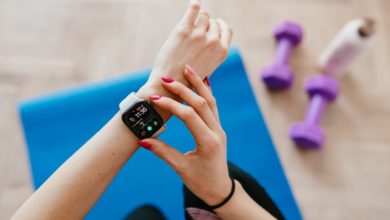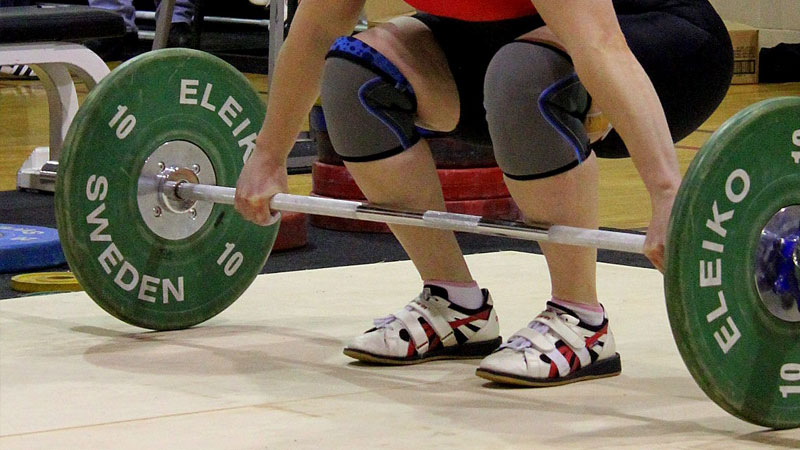
Do I Need Weightlifting Shoes? – Girls Who Lift
If you’re ready to take your leg day up a notch and wondering whether or not you should invest in a pair of weightlifting shoes, you need to read this guide.
As solid-soled footwear used by elite weightlifters around the world, weightlifting shoes are considered to be essential for serious lifter sisters that want to get the best from their workouts.
Others suggest though that it masks movement issues and can cause long-term decreases in mobility.
And they’re pretty expensive too!
In this article we pool our combined love of lifting with the scientific research to tell you once and for all whether or not you should click the purchase button on those weightlifting shoes and take your training to the next level.
Or stick with your Chucks and carry on as you are.
What Are Weightlifting Shoes?
If you decide to play soccer, chances are you’d go buy a pair of studded boots. If it was basketball you’d wear some LeBrons or Kyries.
And obviously if you are a keen runner you more than likely own a pair or two of decent running shoes.
Why? Because to be the best you can be, you sometimes need the right equipment for your sport.
Would you go ice skating in running spikes or play tennis in skis? Nah, of course not.
What makes weightlifting shoes so special?
Weightlifting shoes are a type of sneaker with raised, solid heels.
The wedge of the heel is up to an inch high and made out of a hard, non-compressible material such as plastic, layered leather or sometimes wood.
Compared to a normal sneaker, weightlifting shoes weigh more, have a flat middle and front sole and often have a supporting instep foot strap across the laces to tie your foot firmly in place.
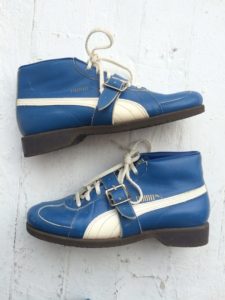
Weightlifting shoes have actually been around a long time.
Back in the day though they were chunky and pretty much the ugliest, clunkiest footwear you could lay your eyes on.
They definitely weren’t the kind of thing a sexy, respectable woman would want to be seen wearing.
But as time passed and weightlifting sports such as CrossFit and Oly lifting became more mainstream, footwear manufacturers started to design lighter, more female-oriented designs with brighter colors and narrower fittings.
Weightlifting shoes are designed with three ‘sole’ purposes (apologies for the pun):
- Boost stability at your ankle (and hip too)
- Increase force so that you can lift more weight during exercises
- Optimize mechanical angles when squatting down
They are used commonly for cleans, snatches, squats, deadlifts and overhead presses, although they’re useful for any exercise where you have to push through the floor to move the bar.
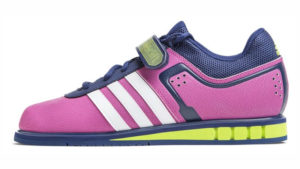
The Benefits of Weightlifting Shoes
So why exactly should you consider wearing a pair of weightlifting shoes?
Are they really as good as people make out?
Here are the main benefits…
Increased force production and power
Ah, you might remember Newton’s laws of motion from high school. We don’t blame you if you don’t though as it wasn’t exactly the most captivating of lessons.
So here’s a recap – ‘for every action there is an equal and opposite reaction’.
On other words, the amount of force you push through the floor is directly related to the upward movement of the bar.
When you try to squat or clean in a pair of running sneakers, much of that force is absorbed by its flexible, spongy sole. But with a weightlifting shoe (which is solid of course), you can produce greater force through the floor, and as such, stronger reaction force.
The result? More drive, power and strength.
Improves your range of motion
Because weightlifting shoes elevate your heels, they reduce the need for ankle and calf flexibility, which is a big issue for most people wanting to squat ass-to-grass.
Being able to squat down without needing to dorsiflex (pull your foot towards your shin) as much means you’ll be able to squat deeper than normal, with a much straighter back too.
This is a godsend for anyone with particularly long femurs or plain bad mobility in their lower body.
And what happens when you squat lower?
More glute activation and a longer range of motion for your quads. It’ll also reduce lower back strain too.
Supports your ankles
Not only do weightlifting shoes reduce the need for maximum dorsiflexion, they also provide stability too.
The uppers of the shoes are tough and sturdy, and this limits ankle ‘roll’ from side-to-side, while still allowing dorsiflexion to take place.
And of course, the strap helps to keep your foot in place too, locking the whole thing down for added support.
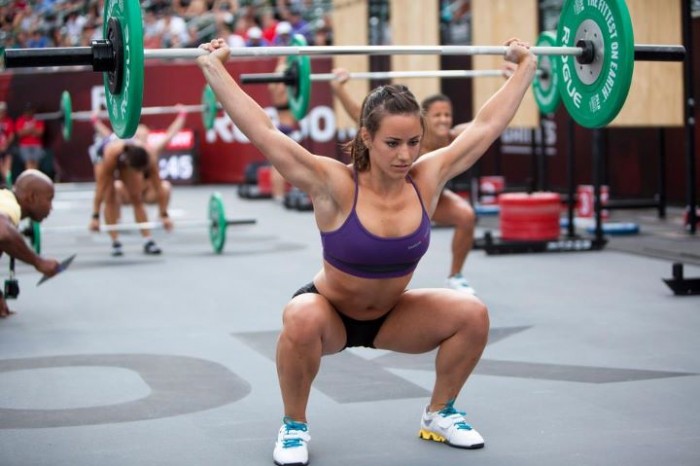
Disadvantages of Weightlifting Shoes
All cool so far huh?
It’d be pretty unfair of us if we didn’t at least tell you some of the down sides to weightlifting shoes.
That way you can weigh up your options squarely before rushing out to buy a pair of jazzy green or pink lifters or personalized ones with your name on (which is an awesome idea by the way).
Do you really need them as a beginner?
There’s an argument that much like a recreational cyclist doesn’t need to rush out and buy an ultra-lightweight, carbon framed road bike, you don’t need weightlifting shoes.
And we kind of get that.
Many beginners focus too much on trying to find shortcuts to improving their weightlifting technique instead of actually practicing lifting.
But if you’re a woman that’s nailed her lifting form and is looking for the next level up, these shoes are a great idea.
You can’t run in them (or walk that well either)
What you might not realize is that because they are so sturdy, weightlifting shoes are hard to walk in, let alone run.
So if you’re planning on doing some cleans and squats and then going for a run after, you’ll need to rethink the plan… or bring another pair of sneakers along for the ride.
There are ‘hybrid’ shoes available that meet somewhere in the middle (think CrossFit competitions where there’s strength and cardio events involved), but they aren’t as solid for weightlifting obviously.
Weightlifting shoes ‘cover up’ poor mobility
If your ankle, hip or upper back flexibility is terrible, weightlifting shoes sure do help.
But because they cover up your poor movement quality, you’re less likely to do the kind of flexibility and mobility work you actually need to do to address the issues.
And what happens if you forget your weightlifting shoes one day?
You’ll be pretty stuck then.
They can be expensive
Much like any other type of sports footwear, you get what you pay for.
And while there are tons of different brands and styles available, the best ones can be a little expensive and cost a few hundred bucks.
The cheaper ones will just fall apart after a while.
Summary – Do I Need Weightlifting Shoes?
Weightlifting shoes are solid, sturdy footwear that have a raised heel made out of plastic or wood. They’re designed to boost performance by improving force production, stability and range of motion.
We’re big fans of them at SpotMeGirl, and many of us wear them when we’re hitting the bar for a big squat or clean day.
Whether you need a pair of weightlifting shoes or not is really up to you. If you’re a decent lifter looking to squeeze that little bit more from your lifting then 100% yes.
But bear this in mind – they’re not for everyone, particularly those that’re new to strength training and still need to smash technique and form first.


